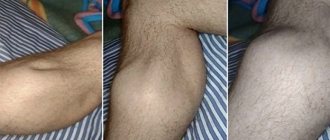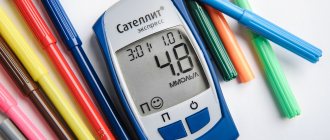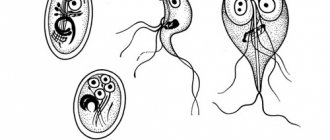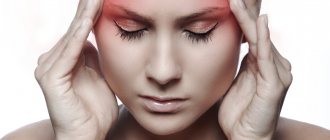Epilepsy is a chronic disease that causes convulsive and non-convulsive seizures. Most often, children and the elderly suffer from this disease. Modern medicine and regular studies of patients with epilepsy have made it possible to determine a plan for the treatment and prevention of this disease at a fairly high level.
Children's neuro-rehabilitation center offers the services of highly qualified epileptologists who specialize in the diagnosis and treatment of this pathology. Call us to make an appointment or clarify the information you are interested in about our specialists and treatment methods.
Opening hours: 8:00 to 20:00
Telephone
Sign up
Causes of the disease
Possible causes of epilepsy include the following:
- genetic predisposition inherited from parents;
- infectious diseases of the brain;
- traumatic brain injuries;
- viral diseases affecting the brain;
- Down syndrome;
- congenital defects of brain structure;
- chronic diseases of the central nervous system.
The causes of the disease are determined during an examination of the body. Each case is individual and requires a professional approach. Manifestations of the disease can be varied, so it is necessary to take into account any deviations from the norm of the child’s behavior, viral diseases he has suffered, and hereditary factors.
How to determine epilepsy in a child
The most common and recognizable symptom is seizures accompanied by loss of consciousness. It is worth noting that this symptom is characteristic of a severe form of the disease.
The dangerous thing about the disease is the fact that the attack occurs suddenly and unpredictably. Often patients are forced to carry medications with them to stop an attack, otherwise death may occur.
Doctors distinguish more than 50 subtypes of epilepsy, each of which has its own characteristic features and manifestations. For a person not involved in medicine, it may be difficult to recognize this disease. Therefore, parents should carefully monitor the child’s health and promptly respond to any changes in his behavior.
In infants and one-year-old children, the disease manifests itself in the same form. You should immediately contact an epileptologist if you experience the following symptoms:
- temporary numbness of the facial muscles, and then their rapid contraction, the face for some time turns into a motionless mask;
- when feeding a baby, the space between his upper lip and nose turns blue;
- the child fixes his gaze on one point for a long time;
- The baby's limbs twitch involuntarily.
The older the child becomes, the more pronounced the symptoms of the disease. The nature of the symptoms of epilepsy at the ages of 3 and 8 years has significant differences. In addition to the above-described signs of the disease, you should pay attention to the behavior and character of the child. Children who are most likely to have epilepsy are aggressive and irritable, often restless. The child finds it difficult to study at school and is unable to build relationships with peers.
Epilepsy - symptoms and treatment
Epilepsy is a chronic brain disease characterized by repeated spontaneous seizures (paroxysms) that occur as a result of excessive neuronal discharges. Clinically, epilepsy is manifested by seizures and changes in consciousness (up to its loss) [4][11]. Epilepsy can be either an independent disease or a symptom of another pathology [9].
According to WHO, approximately every 4-10 people out of 1000 suffer from active epilepsy worldwide - this is one of the most common neurological diseases [20]. In low-income countries, epilepsy is more common, which is associated with an increased risk of malaria and neurocysticercosis, less developed health care structures and increased injuries from road traffic accidents. WHO states that almost 80% of people with epilepsy live in low- and middle-income countries [20]. Moreover, with proper diagnosis and treatment, most patients with epilepsy can live without seizures and deterioration in quality of life.
Epilepsy has been known to mankind for a long time - the first evidence of it dates back to 4000 BC. The disease is a serious social problem, as a lack of information about epilepsy contributes to misunderstanding, fear of symptoms among others and discrimination against patients.
The disease manifests itself in the form of short-term involuntary spasms in any part of the body, or spasms affect the entire body. Sometimes attacks are accompanied by loss of consciousness and loss of control over bowel or bladder functions. Seizures can range from minor memory loss and muscle spasms to severe, prolonged convulsions.
People with epilepsy are more likely to suffer bruises and fractures related to seizures. They are also more likely to have anxiety disorders and depression. In addition, patients with epilepsy have an increased risk of premature death from falls, drowning and burns.
Causes of epilepsy
There are many factors that lead to the occurrence of spontaneous bioelectrical activity (neuronal discharges), which lead to repeated epileptic seizures. Causes of epilepsy include structural, genetic, infectious, metabolic, immune and unknown etiological factors, for example:
- some genetic diseases;
- brain damage in the prenatal period and during birth (hypoxia or birth trauma, low birth weight);
- congenital malformations of the brain;
- head injuries;
- stroke;
- infections - meningitis, encephalitis, neurocysticercosis;
- brain tumors.
In some types of epilepsy, an attack of epilepsy can be triggered by sleep deficiency, alcohol intake, hyperventilation, sensory stimuli: flashing lights, temperature changes, loud sounds.
Depending on what exactly causes epileptic seizures, several types of pathology are distinguished:
- idiopathic (primary, or congenital);
- symptomatic (secondary or focal);
- cryptogenic epilepsy (seizures occur in the absence of focal changes in the brain according to electroencephalography, do not meet the criteria for the idiopathic form, but there is no evidence of their symptomatic nature).
In the case of idiopathic epilepsy, there is always a hereditary predisposition to seizures: the disease was diagnosed in blood relatives, or there were repeated loss of consciousness, freezing, or prolonged enuresis. Scientists have identified about 500 genes that can carry information about this mutation, and the type of inheritance of these genes can be either autosomal dominant (when a disease gene can appear in every generation, suppressing a healthy gene) or recessive (when a disease gene is suppressed by a healthy and manifestation of the disease is possible when the diseased gene is carried by the mother and father) [15][19].
Clinical manifestations of idiopathic epilepsy begin in childhood. Most often, there are no structural changes in the brain, but there is high neuronal activity. There is no pronounced cognitive defect. The prognosis for this form of epilepsy is often favorable; patients feel well on antiepileptic drugs, which significantly reduce the number of attacks and allow long-term remission to be achieved.
With symptomatic epilepsy, there is always an organic cause - cysts, brain tumors, malformations, neurological infections, strokes, as well as brain changes as a result of drug or alcohol addiction.
It is also possible for symptomatic epilepsy to manifest itself as part of hereditary diseases - about 160 of them are known. More often, such diseases involve mental retardation with an autosomal recessive type of inheritance, when both parents are carriers of the genes.
With cryptogenic epilepsy, it is not possible to identify the cause even with a very thorough examination. Cryptogenic epilepsy is one of the most complex chronic pathologies of the central nervous system, the development of which is due to unknown or uncertain causes. The disease is manifested by regularly recurring specific seizures. A long course causes the addition of mental disorders, cognitive abilities decrease, and psychotic symptoms develop.
It should be understood that the appearance of a single convulsive attack, although it is an alarming symptom, does not always indicate the presence of epilepsy. The doctor has the right to consider this diagnosis if the patient has had two or more attacks.
Types and forms of epilepsy in children
Doctors around the world are studying epilepsy closely. There are extremely rare forms of manifestations and symptoms, but most often the disease is characterized by certain types and forms:
- Rolandic epilepsy. The name of the disease is due to the fact that the focus of the disease is located in the central (Rolandic) sulcus of the brain. During a seizure, the child feels tingling and numbness in the facial muscles. Speech disappears for a while and active salivation begins. At the same time, the child remains conscious. The seizure usually lasts no more than 5 minutes. Most often, children aged 3 to 13 years are affected, and the disease recedes from the onset of puberty.
- Nocturnal epilepsy. This form of the disease affects only children under 3 years of age. The disease manifests itself exclusively at night. The attack passes without pain syndromes. Epilepsy is expressed in enuresis (urinary incontinence), sleepwalking, limb cramps during sleep, and irritability develops.
- Absence form of epilepsy. The mildest type of the disease is observed in children aged 5 to 8 years. As a rule, after 8 years the disease completely disappears, rarely becoming more severe. The main symptoms of absence epilepsy: memory lapses during an attack, gaze frozen at one point, synchronous uncontrolled rotation of the head and limbs.
- Idiopathic form of epilepsy. The child has no deviations in either physical or intellectual development. With this type of disease, the patient suffers from periodic seizures with loss of consciousness, increased salivation, and interruptions in breathing. After a seizure, the child has no memory of what happened.
Types of childhood epilepsy
The following types of seizures are distinguished in children:
- Absence or non-convulsive generalized. A common type, manifests itself from birth to puberty. Difficult to detect, absence lasts 5-20 seconds. The child “switches off” from the world around him. Such attacks may be accompanied by a slight tilting of the head and trembling of the eyelids. With equal probability, after puberty they may disappear or, on the contrary, intensify.
- Absence - rolling of the eyes and trembling of the eyelids
- Infantile spasms appear at 2-3 years of age. Early in the morning after waking up, the body is not completely controlled for several seconds. The baby nods his head, straightens his legs and arms, brings them to his chest, and his torso leans forward.
- Atonic is an externally short-term fainting spell, during which the body completely relaxes and consciousness becomes darkened for a few seconds.
- Full-blown seizures with severe convulsions, loss of orientation in space.
- Night attacks that occur during sleep can be recognized by sleepwalking. As a rule, they go away by the period of growing up on their own without the necessary treatment. Symptoms of childhood epilepsy are often mild, and parents and relatives do not notice the presence of the disease for a long period. The similarity of manifestations with other diseases complicates the diagnosis and prescription of correct treatment. The average age of identification of patients is 5-18 years.
It is possible to determine with certainty whether it is possible to cure epilepsy completely in a teenager or young children or not, and how to do this, only in some of its variants. Those whose causes of development have been established in detail. More often we have to hope for positive dynamics, with the weakening of convulsions and a decrease in seizures.
Methods of treatment or correction
Methods of treatment and correction of the disease are individual in nature. However, it is mandatory to obtain the results of the following studies:
- CT and MRI of the brain;
- encephalography (EEG);
- daily EEG monitoring;
- EEG of night sleep.
The data obtained is analyzed by a neurologist and, based on them, a plan for treatment or correction of the disease is developed. Complex treatment may be required for 2-4 years. In some cases, the use of medications becomes lifelong.
In addition to taking medications, your doctor may recommend:
- follow a diet that excludes foods contraindicated for this disease;
- strict daily routine;
- visiting a psychologist.
The main task of medications is to reduce the regularity of attacks and stop the progression of the disease. It is possible to stop the development of the disease in children in 70% of cases. A complete recovery from epilepsy is achieved in 30% of cases.
Treatment of epilepsy
Treatment of epilepsy in children is primarily aimed at restoring their normal well-being and reducing the frequency of attacks. Then, with the help of well-chosen therapy, the specialist minimizes them and, if possible, completely eliminates them, while simultaneously eliminating the cause of the disease.
Therapy is carried out in a complex and may include:
- drug treatment;
- dietary nutrition (focus on fats and reduction in carbohydrates);
- neurosurgical intervention;
- psychotherapeutic support.
There is no single plan according to which therapy is carried out. Much in the scheme depends on the specific form of the disease that the child suffers from, as well as the cause that caused it.
It is extremely important that the work of the epileptologist, the young patient and his parents is carried out together; the speed and quality of treatment depends on this. It is necessary to thoroughly follow all prescribed recommendations and establish a clear daily routine for the child.
First aid during a seizure
During an epileptic attack, it is important not to get confused and take all necessary measures to prevent injury. The child must be placed on a flat, not hard surface. To prevent your baby from choking on saliva, be sure to lay him on his side. If the mouth opens during a seizure, a handkerchief should be placed between the teeth without restricting the child's breathing.
It is strictly forbidden to forcefully open your mouth or hold your tongue. Also, you should not give medication to the patient during a seizure. The attack usually lasts no more than 5 minutes. After the seizure stops, it is necessary to check the baby’s breathing, and, if it is absent, perform artificial respiration. Be sure to wait for the child to come to his senses, do not leave him alone.
If the seizure occurred for the first time or lasted more than 5 minutes, or if the child was injured during the seizure, it is recommended to call an ambulance.
When to see a doctor?
Only an epileptologist knows exactly how epilepsy manifests itself in children, can determine its type and prescribe adequate treatment.
Therefore, if you notice the first sign of epilepsy in a child, immediately contact a competent specialist. The earlier he diagnoses the disease, the faster and easier the therapeutic process can be.
The pediatric department of JSC “Medicine” (clinic of academician Roitberg) employs specialists who have many years of practice behind them and work with the most difficult situations.
The building, equipped with the latest specialized technology, is located in the center of Moscow, at 2nd Tverskoy-Yamskaya lane, building 10. Just a 5-minute walk away are the Mayakovskaya, Tverskaya, Chekhovskaya, and Novoslobodskaya metro stations. . You can make an appointment for your child by calling +7 (495) 995-00-33 or using the feedback form.
Disease prognosis
The disease can have different forms and nature. Short-term seizures do not damage brain cells, unlike long-term seizures, which can cause the death of nerve cells in the brain. Sudden loss of consciousness has a negative impact on the child's health, which can lead to injuries and accidents.
As the disease develops, the child may experience psychological problems - he may begin to fear seizures, which may result in panic attacks.
Diagnosis of epilepsy
The most accurate way to diagnose epilepsy is an electroencephalogram recorded over several hours (EEG monitoring, preferably accompanied by a video recording of the attack). Epilepsy requires studying the functions of the brain, excluding other causes of convulsive syndrome: an MRI or CT scan of the brain is prescribed. Additionally, laboratory diagnostics are used.
Tests for epilepsy
In the laboratory, the presence of chromosomal abnormalities can be determined using molecular screening.
Changes in the telomeres of some chromosomes are detected, leading to limited cognitive function. For the purpose of genetic diagnosis, the following is prescribed:
- molecular screening for microdeletions/microduplications (molecular copies of a chromosome region);
- gene diagnosis of Martin-Bell or Shereshevsky-Turner syndrome.
Laboratory methods are used to diagnose TORCH infections that contribute to the development of epileptic syndrome.
To correct anticonvulsant therapy, a number of laboratory tests of the content of medications are performed:
- Levetiracetam
- Carbamazepine
- Clonazepam
- Difenin
- Phenytoin
How can we help
The neuro-rehabilitation center employs qualified specialists who are ready to provide professional assistance to every child. Since epilepsy is often accompanied by delays in general development and cognitive impairment, we recommend that you undergo a comprehensive examination and rule out possible developmental problems.
We strive to ensure that every child, after completing a course of therapy, can develop fully, does not experience psychological problems, and can study in a regular school.
Our center provides all the conditions to make children and parents feel comfortable:
- homely atmosphere and warm welcome;
- individual approach to each patient;
- modern medical equipment for diagnosis and correction of neurological disorders;
- complete confidentiality;
- individual correction program.









